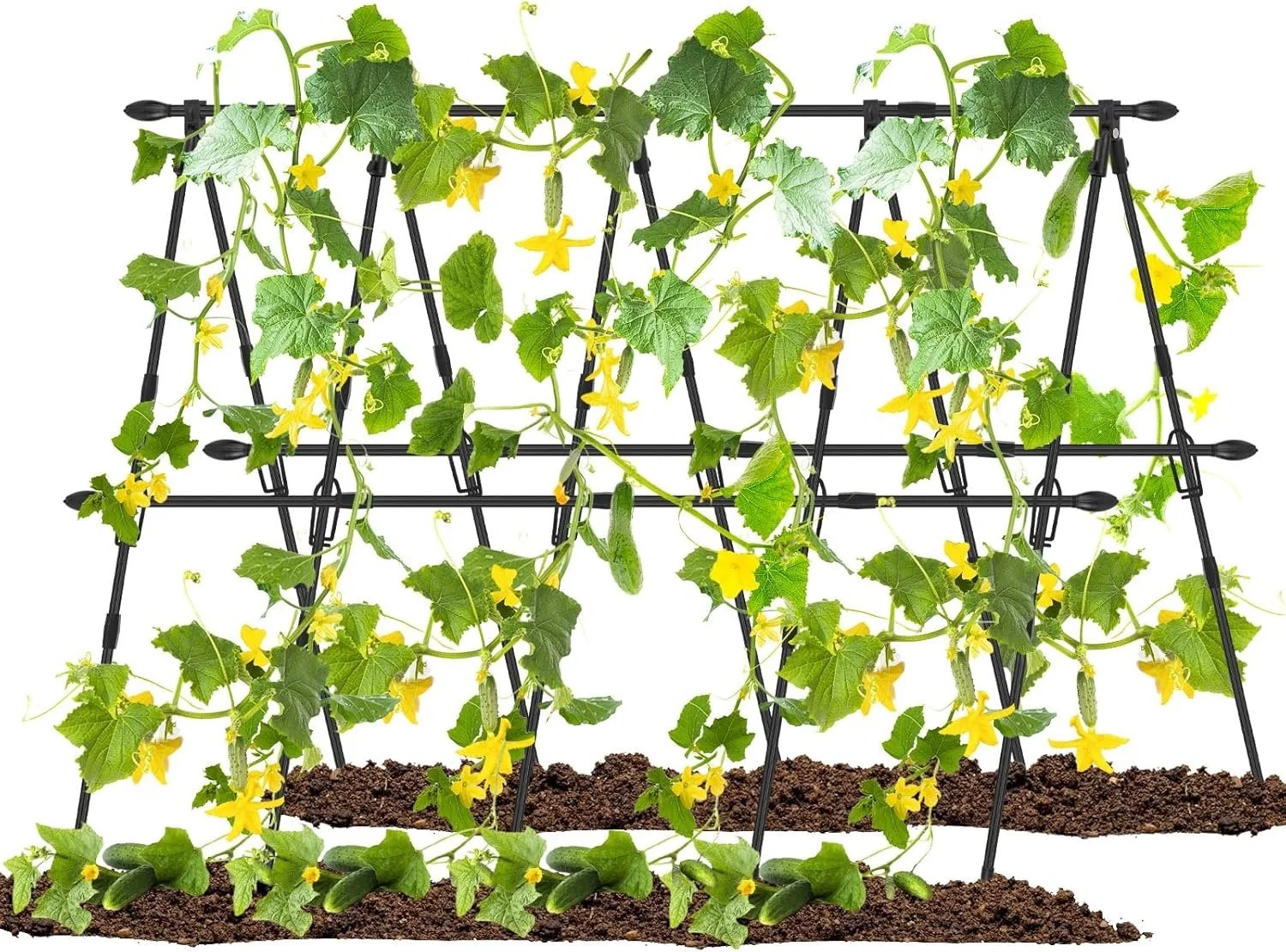The seeds have all come up. The transplants are all in the ground. Your vegetable garden is growing, so it’s time to sit back, relax and enjoy. Well, not exactly.
As all veteran gardeners know, there are constantly chores to be accomplished. It’s now time to trellis some of those vegetables you planted.
Trellising gets the plant and fruit up off the ground. This makes for better quality fruit and less disease. It also helps maintain order in the garden and makes harvesting easier.
For tomatoes, some people simply put cages over the plant to support it as it grows. Another method is to drive a 1-inch- square, 4-foot stake into the ground by each plant and tie the plant to the stake.
If you have a long row of tomatoes, you can set a large post at each end of the row and again about every 20 feet within it. Attach a wire across the top of the posts and about 4 inches above the ground. Use twine to tie each plant to the wires for support.
Peppers can be staked as well. Place similar 1-inch-square stakes about every fourth plant with twine running from stake to stake. Start the first twine 4 inches above the ground.
As the peppers grow, put another string about every 4 inches above the last one. Start with the first stake and go on one side of the plants. Then go around the next stake and so on. When you get to the last stake, come back down the other side of the plants to box the plants in and keep them from falling over.
Another crop that works good with a trellis is cucumbers. You can use 4-foot fencing wire and some posts to build a temporary fence beside the cucumber row. Then just train the vines up on the fence as they grow. You’ll find and pick your cukes easier.
Eggplant can be staked, too. Place either tomato stakes or rebar next to each eggplant. Then secure it to the stake. Be careful not to cut into plants as you tie them with twine. But keep the twine tight enough to support the plants.
Trellising is one chore that should be accomplished fairly soon after the plants are established.
Don’t forget to scout for insects and disease problems, too. Keep your weeds in check, and water as needed. The gardener's work is never quite done. But doing chores when they're needed will help you relax and enjoy the lazy days of summer a little more.

